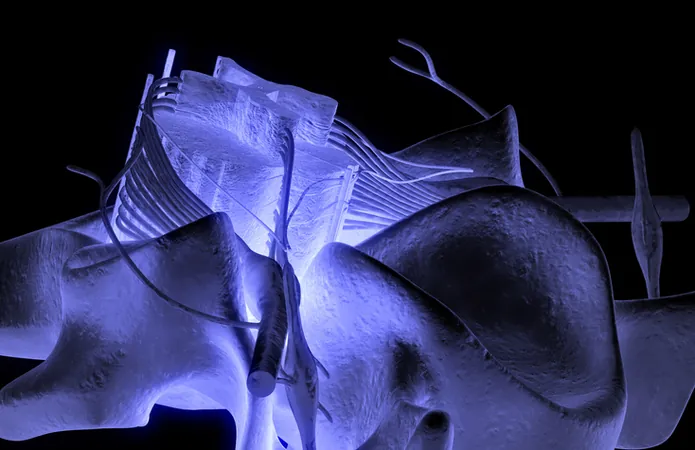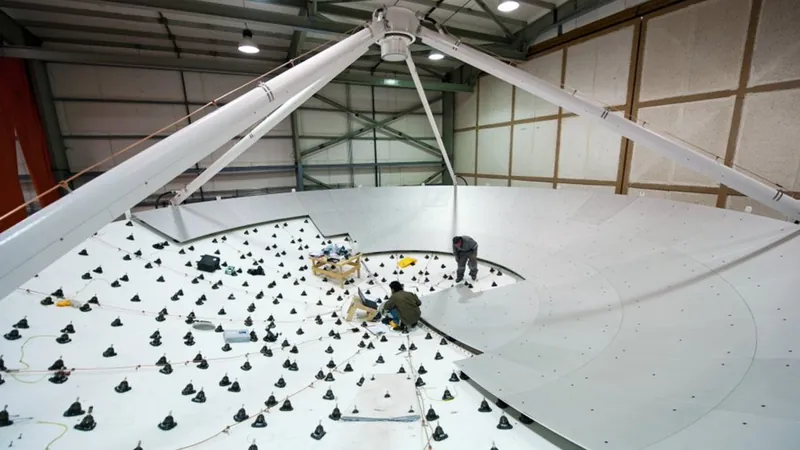
Revolutionary Breakthrough: Spinal Cord Repair Unlocked by Inhibiting MAOB
2025-09-12
Author: Sarah
Groundbreaking Discovery in Neuroregeneration
Researchers at Korea's Institute for Basic Science (IBS) have just made a game-changing discovery that could redefine spinal cord injury recovery! In a study published in *Nature Neuroscience*, they uncovered a molecular "brake"—the enzyme monoamine oxidase B (MAOB)—that hinders regenerative processes following a spinal cord injury (SCI). This revelation could open the door to new therapies aimed directly at repairing neural damage.
Unlocking the Secrets of Spinal Recovery
IBS Director C. Justin Lee, PhD, a co-author of the study, emphasized the groundbreaking nature of these findings, stating, "This study identifies a direct molecular pathway that suppresses neural regeneration after spinal cord injury and presents a strategy to overcome it." Unlike conventional treatments that often focus solely on managing symptoms or inflammation, this research highlights a novel approach to stimulate actual neural repair.
The Problem with Current Treatments
Traditionally, the inability of many spinal cord injury patients to recover has been linked to the formation of a so-called glial barrier. This barrier, comprised of proliferating astrocytes and other glial cells, initially serves to protect the injury site but eventually blocks the essential regrowth of axons. Existing therapies mostly aim to reduce inflammation rather than promoting genuine neural healing.
The Role of GABA in Neural Blockade
Building upon previous research, the team discovered that high levels of GABA—produced by astrocytes through MAOB—could inhibit crucial growth factors like brain-derived neurotrophic factor (BDNF) and its receptor TrkB, effectively stifling regenerative signaling. This mechanism explains why spinal repair has been so painstakingly slow, and provides a clear target for innovative therapies.
Remarkable Results from Mouse Models
The research utilized mouse models to explore the effect of MAOB suppression and enhancement in spinal astrocytes. The results were astounding: mice with suppressed MAOB showed significant axonal regrowth and improved motor functions. In stark contrast, those with increased MAOB not only faced severe tissue loss but also failed to recover any functional abilities.
Pharmacological Advances with KDS2010
In a significant breakthrough, the team tested the selective MAOB inhibitor KDS2010 as a potential treatment. This approach restored BDNF levels and its receptor, leading to fewer hindlimb slips during mobility tests in rodents, and improved tissue preservation in non-human primates. Histological analyses confirmed reduced lesion sizes and increased expressions of pro-regenerative markers.
From Lab to Clinic: A New Hope for SCI Patients
KDS2010 has already completed a Phase I clinical trial for Alzheimer’s and Parkinson’s disease, strengthening its viability as a potential SCI treatment. Dr. Lee noted the upcoming Phase II study targeting human patients, which could revolutionize care for spinal cord injuries.
Future Directions and Broader Implications
The researchers plan to expand their investigations into the MAOB-GABA pathway’s role in other central nervous system diseases and injuries. They also aim to understand the mechanisms governing BDNF induction and explore additional pathways that might contribute to GABA production in cases where KDS2010 shows less effectiveness. Dr. Lee concluded, "The translational relevance of our findings is particularly strong, as the effects of MAOB inhibition are consistently observed across species and various SCI recovery phases." This promising research could truly bring about a new dawn in spinal cord injury treatment.


 Brasil (PT)
Brasil (PT)
 Canada (EN)
Canada (EN)
 Chile (ES)
Chile (ES)
 Česko (CS)
Česko (CS)
 대한민국 (KO)
대한민국 (KO)
 España (ES)
España (ES)
 France (FR)
France (FR)
 Hong Kong (EN)
Hong Kong (EN)
 Italia (IT)
Italia (IT)
 日本 (JA)
日本 (JA)
 Magyarország (HU)
Magyarország (HU)
 Norge (NO)
Norge (NO)
 Polska (PL)
Polska (PL)
 Schweiz (DE)
Schweiz (DE)
 Singapore (EN)
Singapore (EN)
 Sverige (SV)
Sverige (SV)
 Suomi (FI)
Suomi (FI)
 Türkiye (TR)
Türkiye (TR)
 الإمارات العربية المتحدة (AR)
الإمارات العربية المتحدة (AR)